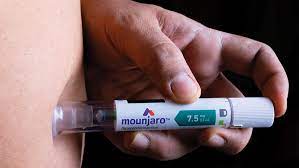
In the realm of modern medicine, the technique of injection has transformed the way we administer medications, vaccines, and therapeutic agents to patients. buy Mounjaro in bulk near me a process of introducing substances directly into the body through needles and syringes, has become an indispensable tool in medical practice, offering swift and effective delivery of treatments. From vaccinations that bolster our immune system to potent medications that combat ailments, injections have played a pivotal role in improving global healthcare.
One of the key advantages of injections lies in their ability to ensure rapid absorption of medications into the bloodstream. Unlike oral medications that must pass through the digestive system, injections bypass this step, allowing the active components to directly reach the circulatory system for immediate distribution to target areas. This is particularly crucial in emergency situations where swift action is required, such as in the administration of life-saving drugs like epinephrine during severe allergic reactions.
Moreover, injections offer a high degree of accuracy in dosage delivery, a critical factor in patient care. With the ability to fine-tune dosages based on individual needs, healthcare professionals can tailor treatments to achieve optimal results while minimizing side effects. This precision is especially evident in insulin therapy for diabetes, where carefully calibrated doses of insulin are injected to regulate blood sugar levels.
The injection technique itself has evolved significantly over time, with various methods designed to cater to different medical scenarios. Subcutaneous injections, where medication is introduced into the fatty tissue beneath the skin, are commonly used for vaccines and hormonal therapies. Intramuscular injections penetrate deeper into muscle tissue and are frequently employed for certain vaccines and medications requiring prolonged release. Intravenous injections, on the other hand, allow for direct delivery into veins, enabling rapid onset of action and accurate titration of critical drugs.
However, while injections offer numerous benefits, they also require skillful administration to ensure patient comfort and safety. Proper sterilization techniques, correct needle sizes, and appropriate injection sites are all integral to preventing complications such as infection or tissue damage. Additionally, the fear of needles is a significant concern for many patients, and healthcare providers are actively exploring strategies to mitigate this anxiety and enhance the overall injection experience.